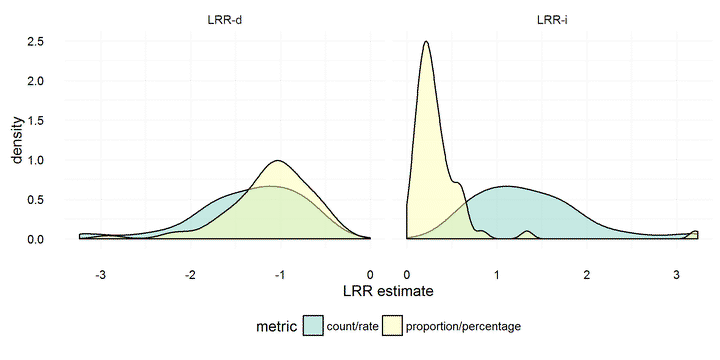Using response ratios for meta-analyzing single-case designs with behavioral outcomes
 Distribution of LRR-d and LRR-i effect size estimates by outcome metric.
Distribution of LRR-d and LRR-i effect size estimates by outcome metric.
Abstract
Methods for meta-analyzing single-case designs (SCDs) are needed to inform evidence-based practice in clinical and school settings and to draw broader and more defensible generalizations in areas where SCDs comprise a large part of the research base. The most widely used outcomes in single-case research are measures of behavior collected using systematic direct observation, which typically take the form of rates or proportions. For studies that use such measures, one simple and intuitive way to quantify effect sizes is in terms of proportionate change from baseline, using an effect size known as the log response ratio. This paper describes methods for estimating log response ratios and combining the estimates using meta-analysis. The methods are based on a simple model for comparing two phases, where the level of the outcome is stable within each phase and the repeated outcome measurements are independent. Although auto-correlation will lead to biased estimates of the sampling variance of the effect size, meta-analysis of response ratios can be conducted with robust variance estimation procedures that remain valid even when sampling variance estimates are biased. The methods are demonstrated using data from a recent meta-analysis on group contingency interventions for student problem behavior.